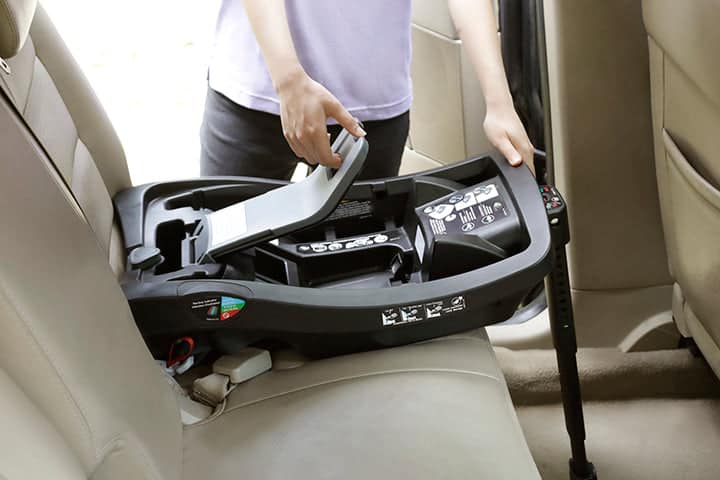A Parent’s Comprehensive Guide to Installing a Car Seat
Welcome, fabulous parents! Are you ready to master the art of car seat installation? Fear not, for we have created the ultimate guide to ensure your little one’s safety during car journeys. From selecting the right car seat to the final click of the buckle, we’ve got you covered!
Why Proper Car Seat Installation Matters?
Before we dive into the nitty-gritty of installation, let’s understand why installing a car seat correctly is so crucial. Safety is paramount when it comes to our children, and a properly installed car seat can be a lifesaver. Car accidents are one of the leading causes of injury and death for children, but a car seat that is installed and used correctly can reduce the risk substantially.
Choosing the Right Car Seat
The first step in our car seat installation journey begins with picking the right car seat. This decision can seem overwhelming with so many styles, brands, and age/weight capacities out there! Here are some quick tips to narrow down your choices:
- Check the Label: Look for a car seat that suits your child’s age, weight, and height.
- Longevity: Consider a convertible or all-in-one car seat to grow with your child from infancy to toddlerhood and beyond.
- Compatibility: Ensure the car seat is compatible with your vehicle. Not all seats fit in all cars.
- Meet the Standards: Choose a car seat that meets or exceeds Federal Motor Vehicle Safety Standard 213.
Getting Started with Installation
Now, onto the installation! There are two main methods to secure car seats into vehicles: using the seat belt or the LATCH system (Lower Anchors and Tethers for Children). New cars manufactured after 2002 are equipped with the LATCH system, but seat belts are equally safe when used correctly.
Using the LATCH System
- Locate the Anchors: Find the lower anchors between your vehicle’s back seat’s cushion and backrest.
- Connect the Hooks: Attach the car seat’s hooks to the anchors, ensuring there’s no twisting in the straps.
- Press and Tighten: Push down firmly on the seat while pulling the straps to get a tight fit. The seat shouldn’t move side-to-side or front-to-back more than 1 inch when you’re done.
Using the Seat Belt
- Route the Belt: Follow your car seat’s instructions to correctly route the vehicle’s seat belt through the appropriate belt path on the car seat.
- Buckle and Lock: Buckle the seat belt and lock it according to your vehicle’s instruction manual. This usually involves pulling the seatbelt all the way out to activate the built-in lock-off feature.
- Tightness Check: After locking the belt, press down firmly on the car seat and tighten. Again, the seat should not move more than 1 inch in any direction.
Securing Your Child
With the car seat installed securely, it’s time to buckle up your little one! Here’s how:
- Positioning: Place your child in the car seat with their back and bottom flat against the seat.
- Harnessing: Adjust the harness so the straps are at or below your child’s shoulders for rear-facing seats, and at or above for forward-facing seats.
- Buckle Up: Buckle the harness and the chest clip, and tighten until snug. You shouldn’t be able to pinch any excess strap at your child’s shoulders.
And voilà! Your precious cargo is now securely fastened and ready to go. But, the efforts don’t stop here. Regular checks and adjustments as your child grows are essential in maintaining car seat safety.
Keep It Tight and Check It Regularly
With every journey, it’s a smart idea to give your car seat a quick shake at the base to ensure it hasn’t loosened up over time. In addition, as your child outgrows their clothes, they’ll also outgrow their car seat’s settings. Keep an eye on the harness and buckle positions, making sure they’re always appropriately adjusted for your child’s size.
Is your heart warming up to the idea that you’ve got this car seat installation down? By now, you should feel more comfortable and confident with the process. Remember, safety is always the priority when it comes to our children. And guess what? You’re doing a fantastic job — way to go, super parent!
Installing a car seat might seem like an ordeal, but once you get the hang of it, it’s just another part of your daily routine. With this guide, you’re on your way to mastering car seat installation and ensuring that every car ride with your little one is as safe as can be. Stay tuned for the next sections, where we’ll delve even deeper into car seat safety and advanced installation tips!

5 Things Parents Should Know in Preparing to Install a Car Seat
Understand Your Car and Car Seat Compatibility
Before you start, it’s important to ensure that your chosen car seat is the right fit for your vehicle. Vehicles and car seats vary in size and design, so check the car seat manual and your vehicle’s user guide to confirm compatibility. If possible, try installing the car seat before purchasing to ensure a snug fit.
Choose the Right Location in Your Car
Not all seats in your vehicle may be suitable for installing a car seat. The safest place for your child is in the back seat, away from active airbags. If possible, place the car seat in the middle of the back seat to minimize risk of injury during a crash. Review your vehicle’s manual to decide on the best location and direction (rear-facing, forward-facing, or booster) based on your child’s age, weight, and height.
Have the Proper Tools Ready
While most car seats do not require special tools for installation, having a few handy can make the process smoother. A car seat’s instruction manual might suggest using a towel or a pool noodle to achieve the correct recline angle, especially for rear-facing seats. Always follow the guidelines provided by your car seat manufacturer.
Understand the LATCH System or Seat Belt Path
LATCH is an acronym for Lower Anchors and Tethers for Children. It’s designed to make car seat installation easier and minimize errors. If your vehicle and car seat both have the LATCH system, it can be a handy way to install your car seat. However, if you are using the vehicle’s seat belt, familiarize yourself with the seat belt path in your specific car seat model to ensure a secure installation.
Keep the User Manuals Handy
The most reliable sources of information for installing your car seat are the user manuals for both your vehicle and the car seat. These manuals contain specific instructions and illustrations that are crucial to proper installation. Keep them accessible and refer to them throughout the installation process to address any uncertainties.
Preparation is key to a successful car seat installation. Consider practicing installation a few times without your child in the car seat to become more comfortable with the process. Remember, patience and thoroughness will go a long way in ensuring your child’s safety on the road. Feel confident as you gear up for this important task—you’ve got this, parents!
Final Check: Before You Hit the Road
After you’ve installed the car seat, give it a firm shake at the base— it shouldn’t move more than an inch side-to-side or front-to-back. Ask a certified Child Passenger Safety Technician (CPST) to double-check your work if you’re unsure. Many communities offer free car seat checks by the police or fire department, or at local baby gear stores.
Remember these installation steps and preparation tips, and you’ll be well on your way to ensuring that your child rides as safely as possible. Every child is precious, and every parent’s vigilance can make all the difference. Take a deep breath, take your time, and trust in your ability to install a car seat like a pro.
For more great fun click here. For more information see here
Disclaimer
The articles available via our website provide general information only and we strongly urge readers to exercise caution and conduct their own thorough research and fact-checking. The information presented should not be taken as absolute truth, and, to the maximum extent permitted by law, we will not be held liable for any inaccuracies or errors in the content. It is essential for individuals to independently verify and validate the information before making any decisions or taking any actions based on the articles.




